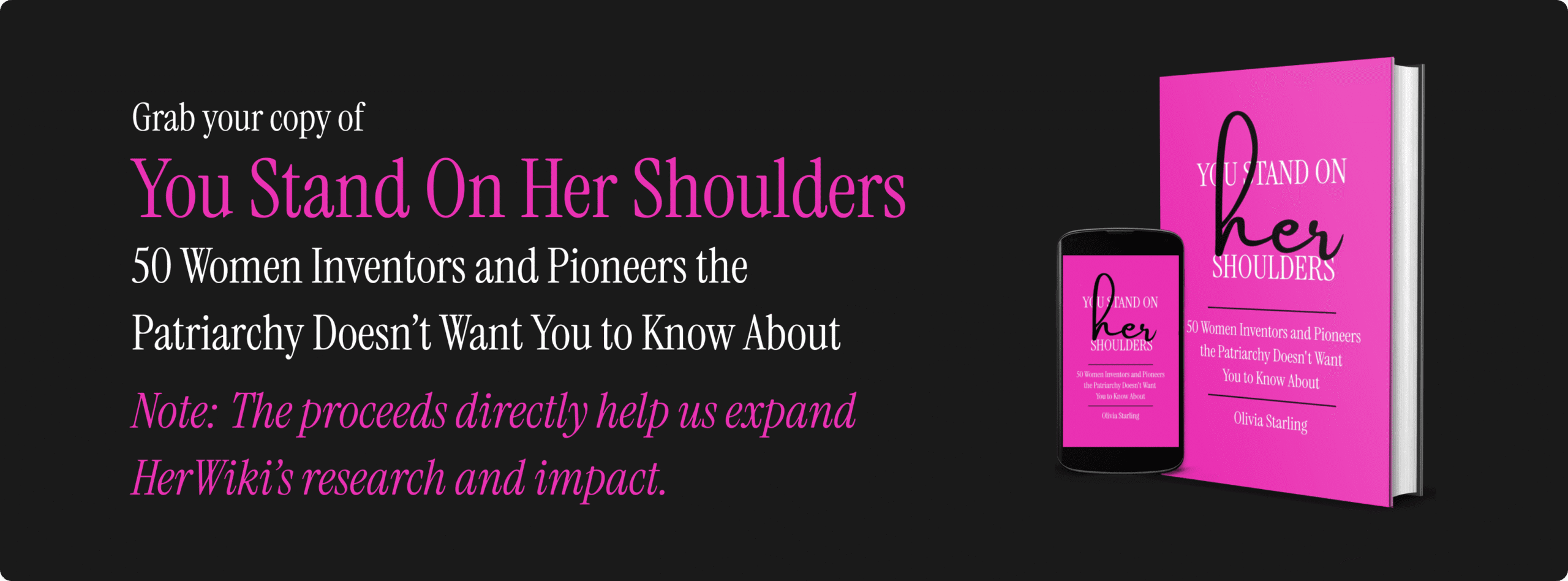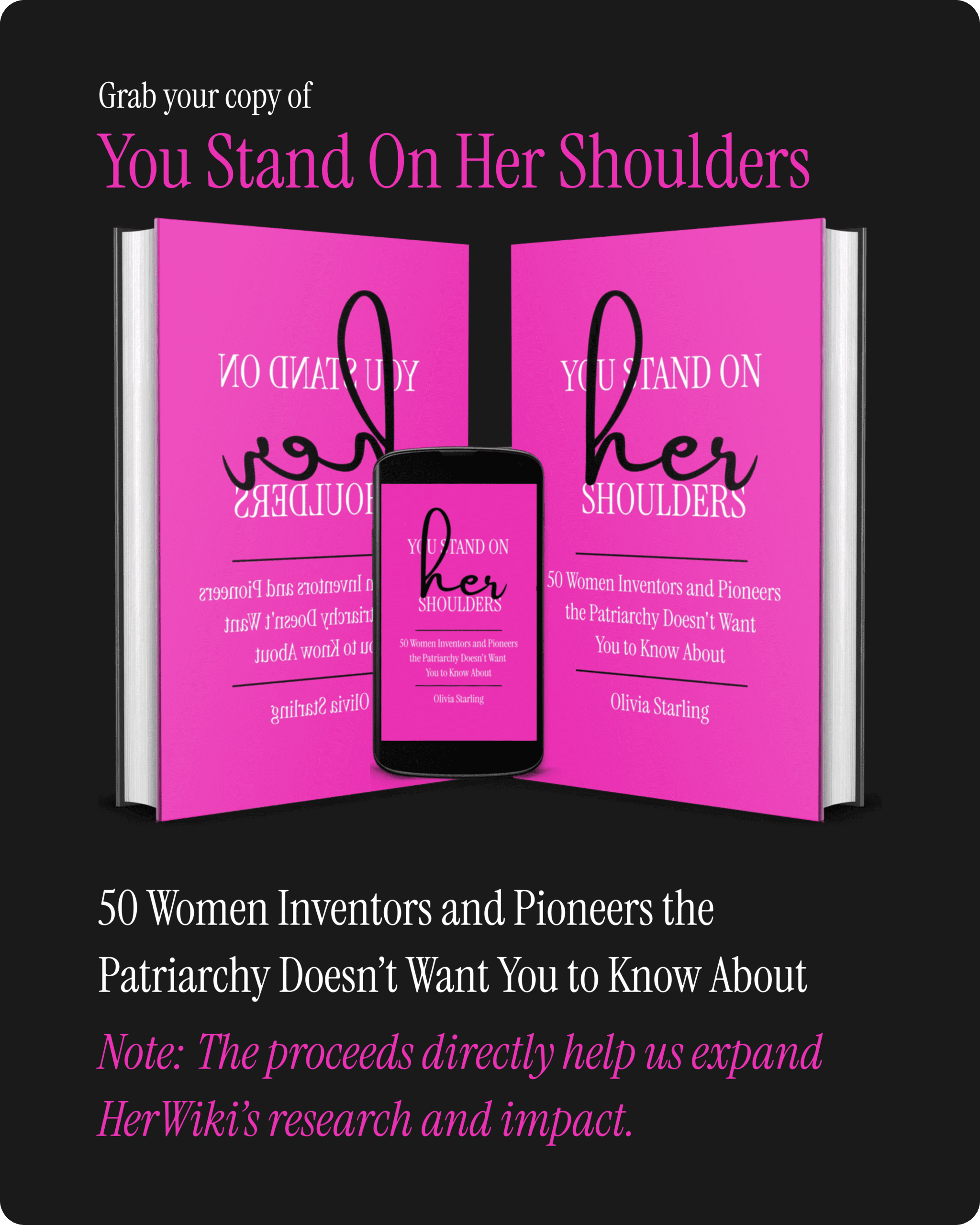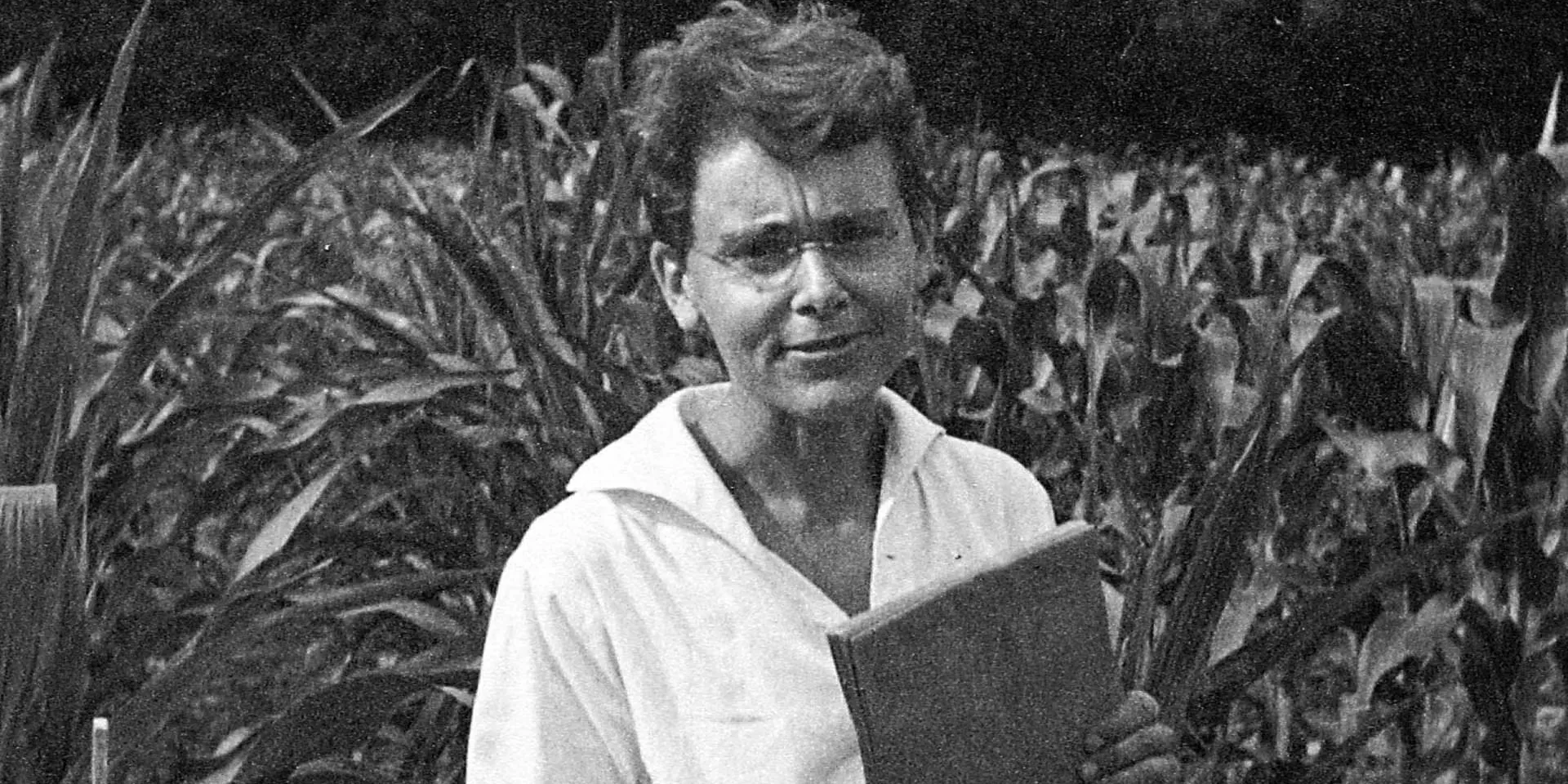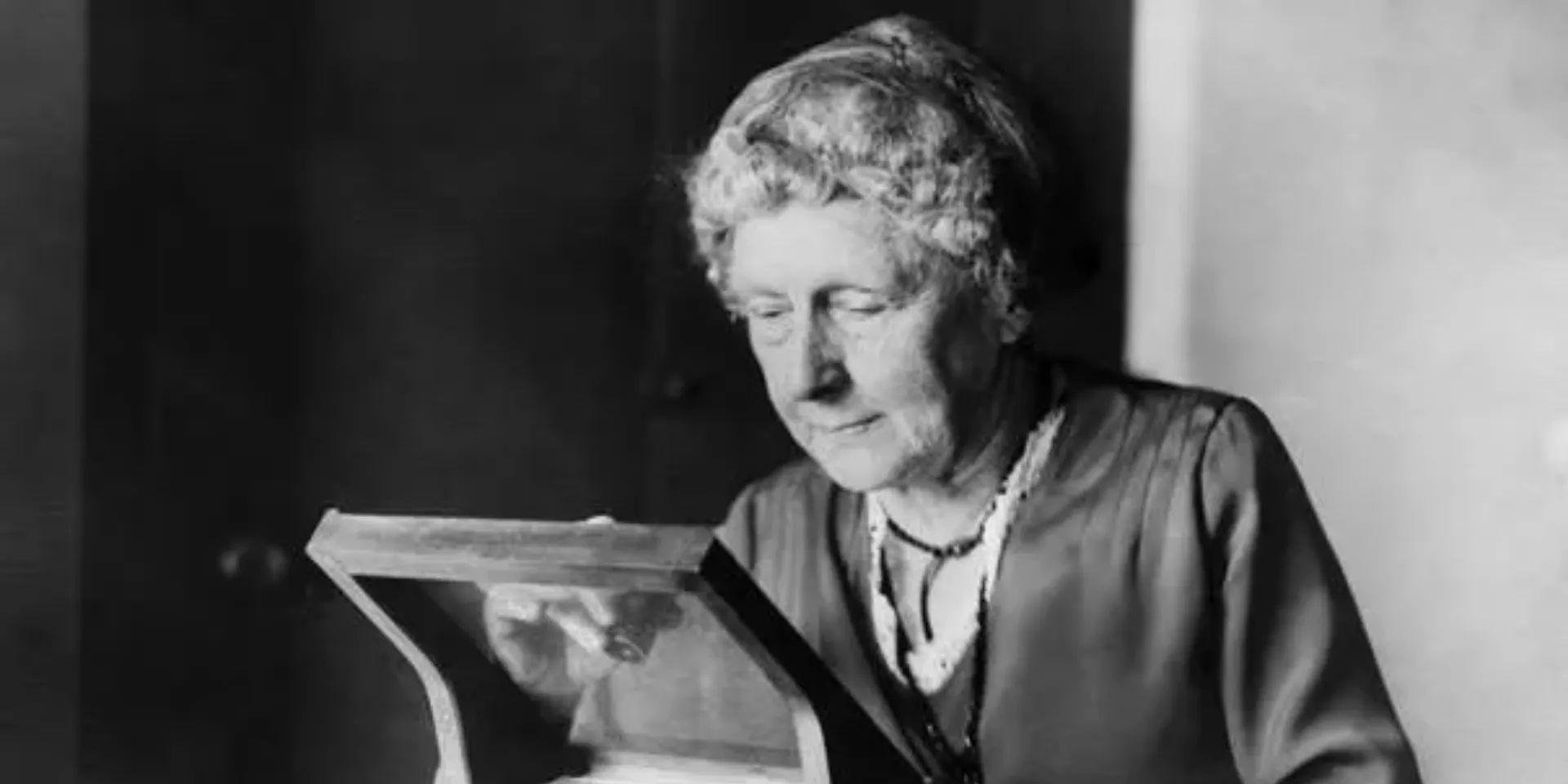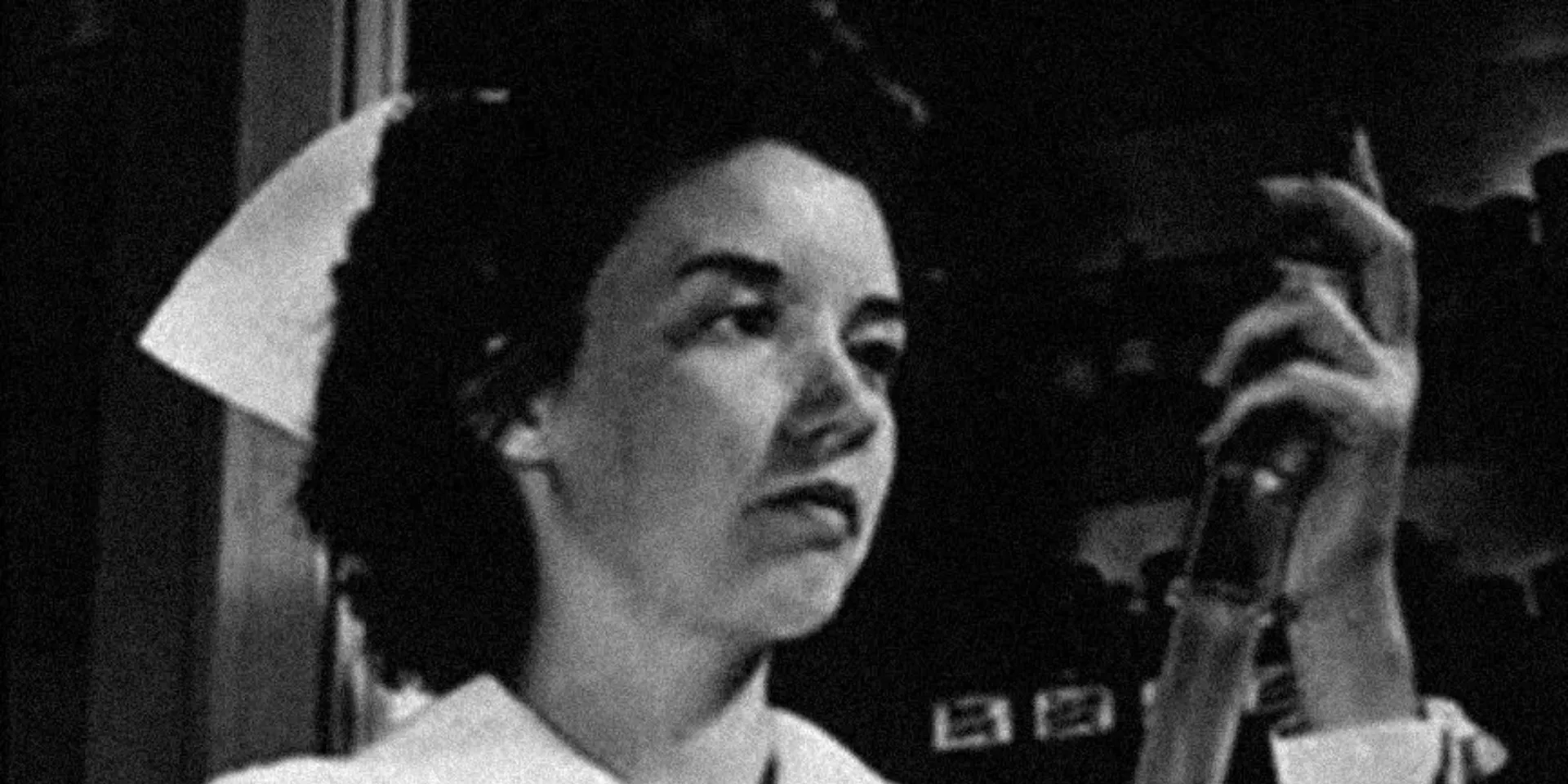Contents
ToggleEvery time someone opens a book about robots, space travel, or genetic engineering, they’re reading the offspring of an idea born in a teenager’s mind during a gloomy summer in Switzerland. Mary Wollstonecraft Shelley created the template for science fiction before the genre had a name. She wrote Frankenstein at 18, inventing an entire literary form that would shape how humanity thinks about technology, progress, and the future itself.
But calling Mary Shelley just the author of Frankenstein misses the point completely. She was a woman who turned personal trauma into universal insights about power, creation, and responsibility. She survived motherhood in an era when childbirth routinely killed women. She lost three children and a husband before turning 25. She built a writing career when women weren’t supposed to have careers at all. And she spent her life arguing that cooperation and compassion could fix the world’s problems when everyone else believed in competition and conquest.
Her story reveals how women’s experiences of creation, loss, and survival became the foundation for modern speculative fiction. More importantly, it shows how one woman’s refusal to accept the world as it was helped create new ways of imagining what it could become.
Early Life: Growing Up in the Shadow of Giants
Mary Wollstonecraft Godwin was born on August 30, 1797, into one of London’s most intellectually radical families. Her mother, Mary Wollstonecraft, had written A Vindication of the Rights of Woman, the founding text of modern feminism. Her father, William Godwin, was a philosopher whose ideas about justice and equality influenced an entire generation of radicals. Both parents believed that rational thought and education could transform society.
But Mary never knew her mother. Wollstonecraft died of infections eleven days after giving birth, leaving Godwin to raise Mary and her half-sister Fanny alone. This early loss would haunt Mary throughout her life and shape everything she wrote about creation, abandonment, and responsibility.
Godwin was a devoted but unusual father. He treated Mary like an intellectual equal from childhood, encouraging her to read philosophy, history, and literature that most girls never encountered. The Godwin household was a gathering place for London’s radical thinkers. Samuel Taylor Coleridge recited poems in their living room. Aaron Burr, the former American vice president, was a regular visitor. Mary grew up surrounded by conversations about revolution, reform, and the power of ideas to change the world.
This education came with a price. Godwin had strong opinions about how children should be raised, but he struggled with the practical aspects of parenting. When Mary was four, he married Mary Jane Clairmont, a widow with two children of her own. The new Mrs. Godwin was quick-tempered and played favorites, clearly preferring her own children to Mary and Fanny. Mary developed a deep dislike of her stepmother that would last throughout her life.
The Godwin family constantly struggled with money. William Godwin had started a publishing business that sold children’s books and educational materials, but it never turned a profit. He borrowed heavily to keep it running, always expecting that the next book or the next loan would solve their problems. This financial instability created stress that affected the entire household.
Despite these challenges, Mary received an extraordinary education for a girl of her time. She had access to her father’s extensive library and learned from the intellectuals who visited their home. She was taught to think critically about politics, religion, and social arrangements that most people took for granted. By her teens, she could discuss philosophy and literature with adults who considered her an intellectual peer.
The Revolutionary Romance That Changed Everything
When Mary was 16, Percy Bysshe Shelley began visiting the Godwin household. Shelley was a 21-year-old poet from an aristocratic family who had been kicked out of Oxford for writing about atheism. He was already married to Harriet Westbrook, but the marriage was unhappy, and Shelley was drawn to the radical ideas he found in Godwin’s Political Justice.
Mary and Percy began meeting secretly at her mother’s grave in St. Pancras churchyard. This detail sounds like something from a Gothic novel, but it reveals something important about Mary’s character. She was drawn to places and experiences that connected her to intense emotions and dramatic ideas. The graveyard meetings weren’t just romantic rebellion—they were Mary’s way of connecting her love for Percy with her grief for the mother she never knew.
On July 28, 1814, Mary and Percy eloped to France, taking Mary’s stepsister Claire Clairmont with them. This decision scandalized everyone who knew them. Mary was 16 and unmarried. Percy was already married to someone else. They had no money and no clear plan for supporting themselves. But they believed that conventional morality was wrong and that love justified breaking social rules.
The European trip that followed was both romantic adventure and harsh education in practical realities. The trio traveled through France, which was still recovering from the devastation of the Napoleonic Wars. They saw burned houses, destroyed crops, and displaced families struggling to survive. Mary wrote in her journal about “the distress of the inhabitants, whose houses had been burned, their cattle killed and all their wealth destroyed.”
These observations of war’s aftermath would influence everything Mary later wrote about the consequences of unchecked ambition and the human cost of pursuing grand goals without considering their effects on ordinary people. The contrast between their romantic idealism and the suffering they witnessed taught Mary that ideas have real-world consequences that their creators can’t always predict or control.
Early Motherhood and Devastating Loss
When Mary and Percy returned to England in September 1814, they faced a hostile world. Mary’s father refused to speak to her. Percy’s family cut off his allowance. They were penniless and socially ostracized. To make matters worse, Mary was pregnant.
She gave birth to a premature daughter in February 1815. The baby was not expected to survive, and she died two weeks later. Mary’s grief was overwhelming. She wrote to a friend: “My baby is dead—will you come to see me as soon as you can. I wish to see you—It was perfectly well when I went to bed—I awoke in the night to give it suck it appeared to be sleeping so quietly that I would not awake it. It was dead then, but we did not find that out till morning.”
This experience of losing a child would profoundly influence Mary’s writing. The themes of creation, abandonment, and parental responsibility that dominate Frankenstein emerged directly from her own experience of bringing life into the world and then losing it. But rather than breaking her, this loss seemed to focus her creative energies in new directions.
By summer 1815, Mary was pregnant again. She gave birth to William Shelley in January 1816. This son, nicknamed “Willmouse,” brought joy back into her life and seemed to stabilize her relationship with Percy. But the pattern of pregnancy, birth, and loss would continue to shape her experience throughout her twenties.
The Summer That Invented Science Fiction
In May 1816, Mary, Percy, and their baby son traveled to Switzerland to spend the summer with Claire Clairmont and Lord Byron. Byron was already famous as a poet and notorious for his scandalous love affairs. Claire had become his mistress and was pregnant with his child. The group rented houses near Lake Geneva and settled in for what they expected to be a pleasant summer of writing, boating, and philosophical conversation.
Instead, they got what Mary later called “a wet, ungenial summer” with constant rain that kept them indoors for days at a time. To entertain themselves, they read German ghost stories aloud by the fire. Byron proposed that each member of the group write their own ghost story as a competition.
Mary struggled to come up with an idea. Every morning, the others asked if she had thought of a story, and every morning she had to admit she hadn’t. The pressure to create something worthy of the company was intense. She was the youngest member of the group and the only woman expected to produce something original.
The breakthrough came during a conversation about the “principle of life” and whether dead matter could be reanimated. Mary later wrote: “Perhaps a corpse would be re-animated; galvanism had given token of such things.” That night, unable to sleep, she experienced what she called a “waking dream”:
“I saw the pale student of unhallowed arts kneeling beside the thing he had put together. I saw the hideous phantasm of a man stretched out, and then, on the working of some powerful engine, show signs of life, and stir with an uneasy, half vital motion.”
This vision became the seed of Frankenstein. What started as a short story for Byron’s ghost story competition expanded, with Percy’s encouragement, into a full novel. Mary was 18 when she began writing it and 20 when it was published anonymously in 1818.
The Hidden Depths of Frankenstein
Most people know Frankenstein as a story about a mad scientist who creates a monster. But Mary Shelley’s actual novel is far more complex and disturbing than its popular reputation suggests. It’s a story about the responsibilities of creation, the consequences of abandonment, and the ways that social rejection can turn innocence into violence.
Victor Frankenstein isn’t just a scientist—he’s a man who creates life and then refuses to take responsibility for what he’s created. He abandons his creature immediately after bringing it to life, leaving it to learn about the world entirely on its own. The creature becomes violent not because it’s inherently evil, but because it’s been rejected by its creator and by every human it encounters.
This dynamic reflected Mary’s own experiences with creation and abandonment. She had watched her father struggle to raise children after her mother’s death. She had experienced the death of her own child and understood the guilt that comes with feeling responsible for a life you couldn’t protect. She had also observed how society treated women who violated conventional expectations, like herself and Claire Clairmont.
The novel’s themes of scientific responsibility and technological danger were remarkably prescient. Mary was writing at the beginning of the Industrial Revolution, when new technologies were transforming society in ways that no one fully understood. Her warning about the dangers of unchecked scientific ambition would prove prophetic as the 19th and 20th centuries brought increasingly powerful and potentially destructive technologies.
But Frankenstein is also a feminist text that critiques masculine approaches to creation and power. Victor Frankenstein tries to create life without women, using science to bypass natural reproduction. His failure suggests that creation without feminine involvement—without care, nurturing, and responsibility—inevitably leads to destruction.
The Italian Years: Love, Loss, and Literary Growth
In March 1818, Mary and Percy left England for Italy, taking Claire and her infant daughter Allegra with them. They had no intention of returning. Percy’s health problems seemed to improve in the warmer climate, and they could live more cheaply in Italy than in England. For Mary, the move also meant escape from the social disapproval that still surrounded their relationship.
HerWiki is built and maintained by the support of amazing readers like you. If this story inspired you, join the cause and help us make HerWiki bigger and better.
But Italy brought new tragedies. Clara, the daughter Mary had given birth to in 1817, died of dysentery in Venice in September 1818. She was barely a year old. Seven months later, three-year-old William died of malaria in Rome. Mary was devastated. She wrote to a friend: “May you my dear Marianne never know what it is to lose two only and lovely children in one year—to watch their dying moments—and then at last to be left childless and forever miserable.”
These losses temporarily broke Mary’s spirit and strained her relationship with Percy. She fell into a deep depression that isolated her from everyone around her. Percy wrote worried poems about her withdrawal and emotional distance. For a time, Mary found comfort only in her writing, pouring her grief into a novella called Matilda about a young woman whose father develops an incestuous passion for her.
The birth of Percy Florence Shelley in November 1819 finally lifted Mary’s spirits. This son would be her only child to survive to adulthood, and she devoted herself to protecting him with an intensity born of her previous losses. The experience of repeatedly losing children had taught her that maternal love requires constant vigilance and that even the strongest emotional bonds can be severed by circumstances beyond anyone’s control.
Despite the personal tragedies, the Italian years were creatively productive for both Mary and Percy. She wrote Valperga, a historical novel about 14th-century Italy that examined the relationship between personal ambition and political power. She also wrote several shorter works and began developing the ideas that would become The Last Man, her post-apocalyptic novel about the end of human civilization.
The Drowning That Changed Everything
In July 1822, Percy Shelley and his friend Edward Williams sailed from Livorno to Lerici in Percy’s new boat, the Don Juan. A sudden storm caught them in the Gulf of Spezia. Their boat sank, and both men drowned. Percy’s body washed ashore ten days later, so decomposed that it could only be identified by the books in his jacket pockets.
Mary was 24 years old and suddenly a widow with a small child to support. Percy’s father, Sir Timothy Shelley, agreed to provide a small allowance for his grandson but only if Mary gave up custody and allowed the boy to be raised by guardians. Mary refused instantly. She would raise Percy Florence herself, no matter what financial hardships that decision created.
The loss of Percy ended one phase of Mary’s life and began another. She had been half of a famous literary couple, known primarily as the wife of a brilliant poet and the daughter of famous radicals. Now she had to establish herself as an independent writer and support herself through her own work.
She spent a year in Genoa with Leigh Hunt and his family, helping to transcribe Byron’s poems and working on her own writing. In July 1823, she returned to England with Percy Florence, determined to make a living as a professional author. This decision was both practical necessity and personal declaration of independence.
Building a Writing Career Against the Odds
Back in England, Mary faced the challenge of supporting herself and her son through writing at a time when few women could make a living as authors. She was still socially ostracized because of her relationship with Percy, and Sir Timothy Shelley made it clear that he disapproved of her and would cut off Percy Florence’s allowance if she published any biography of his son.
Despite these obstacles, Mary built a successful literary career. She wrote novels, short stories, biographical articles, and travel books. She edited Percy’s poems and wrote extensive notes that helped establish his reputation as a major Romantic poet. She contributed regularly to literary magazines and annual gift books that were popular with middle-class readers.
Her novel The Last Man, published in 1826, was one of the first works of science fiction to imagine the complete destruction of human civilization. Set in the 21st century, it tells the story of a plague that gradually kills everyone on Earth except for one survivor. The novel was both a response to recent cholera epidemics and a meditation on the fragility of human progress and civilization.
The Last Man was too dark and pessimistic for contemporary readers, who preferred more optimistic visions of the future. But it established themes that would become central to science fiction: the unintended consequences of human ambition, the vulnerability of technological civilization, and the psychological effects of isolation and survival. Modern readers recognize it as a remarkably prescient vision of environmental collapse and social breakdown.
The Hidden Political Radical
For much of the 20th century, scholars viewed Mary Shelley as a relatively conservative figure who had retreated from the radical politics of her youth after Percy’s death. This interpretation was based partly on her later novels, which seemed more focused on domestic themes than political revolution, and partly on her careful public behavior, which avoided the kind of scandalous controversy that had marked her early life.
Recent scholarship has revealed this interpretation to be completely wrong. Mary remained committed to radical political causes throughout her life, but she expressed her politics more carefully and strategically than she had as a teenager. She understood that her position as a single mother made her vulnerable to social disapproval that could affect her son’s future.
Her biographical articles for the Cabinet Cyclopaedia consistently criticized authoritarian governments, religious persecution, and social inequality. Her travel writing advocated for Italian independence and democratic reform. Her novels contained sophisticated critiques of aristocratic privilege, gender inequality, and economic injustice. She was careful to embed these political messages within acceptable literary forms, but they were unmistakably present for readers who knew how to look for them.
Mary also used her limited financial resources to help other women who had been rejected by conventional society. She provided money and practical assistance to women who had been abandoned by their husbands, had children outside marriage, or were otherwise considered socially unacceptable. These actions demonstrated her continued commitment to the feminist principles her mother had articulated in A Vindication of the Rights of Woman.
The Science Fiction Pioneer
While Mary Shelley is often credited with writing the first science fiction novel, the full scope of her contribution to the genre is rarely understood. She didn’t just write about technology and the future—she invented the basic themes and narrative structures that continue to define science fiction today.
Frankenstein established the template for stories about artificial intelligence, genetic engineering, and the unintended consequences of scientific research. Victor Frankenstein’s relationship with his creature anticipates modern stories about robots, androids, and other forms of artificial life that become dangerous when they’re not properly controlled or cared for.
The Last Man created the template for post-apocalyptic fiction, including modern stories about pandemics, environmental collapse, and the breakdown of civilization. Its focus on psychological survival in impossible circumstances influenced writers from H.G. Wells to Margaret Atwood.
But Mary’s most important contribution to science fiction was her focus on the social and ethical implications of technological change. While many later science fiction writers became fascinated with gadgets and technical possibilities, Mary was always more interested in how new technologies would affect human relationships, social structures, and moral responsibilities.
Her approach to science fiction was distinctly feminine in its emphasis on cooperation, empathy, and care for others. Male science fiction writers often focused on conquest, competition, and technological solutions to human problems. Mary’s science fiction suggested that technology without compassion would inevitably lead to destruction.
The Literary Legacy
By the 1830s, Mary Shelley had established herself as one of England’s leading novelists. Her works were widely read and generally well-reviewed. She had successfully supported herself and her son through her writing for more than a decade. She had also played a crucial role in establishing Percy Shelley’s reputation as a major poet by editing his collected works and writing biographical notes that helped readers understand his life and ideas.
But Mary’s literary ambitions extended beyond individual success. She was consciously working to expand the possibilities for women writers and to demonstrate that women could address serious philosophical and political themes. Her novels tackled questions about science, politics, history, and human nature that were typically considered too complex for female authors.
Her biographical writing was particularly innovative. She wrote dozens of lives of European authors and political figures for the Cabinet Cyclopaedia, bringing a distinctly feminist perspective to historical narrative. She emphasized the role of women in historical events, criticized the violence and inequality of traditional political systems, and argued for the importance of cooperation and compassion in human affairs.
These biographical articles had enormous influence because they were widely distributed and read by middle-class families throughout Britain and America. Through them, Mary was able to reach audiences who might never have read her novels and to plant ideas about women’s capabilities, political reform, and social justice in the minds of ordinary readers.
The Widow’s Challenges
The final decades of Mary’s life brought both satisfaction and frustration. Percy Florence grew into a pleasant young man who attended Harrow and Cambridge, but he showed no signs of inheriting his parents’ intellectual gifts or radical politics. Mary struggled with her disappointment in her son while trying to maintain their relationship.
She also faced persistent financial pressures. Sir Timothy Shelley’s allowance was barely enough to live on, and Mary’s writing income was irregular. She had to carefully budget every expense and often worried about how she would pay for Percy Florence’s education or her own medical care.
In the 1840s, Mary became the target of several blackmail attempts by people who threatened to publish embarrassing letters or spread damaging rumors about her past. She managed to thwart these attempts, but they reminded her that her unconventional early life continued to make her vulnerable to social attack.
Sir Timothy Shelley finally died in 1844, when he was 90 years old. Percy Florence inherited the family estate, finally providing Mary with financial security. But this relief came late in her life, when declining health limited her ability to enjoy her newfound freedom from economic worry.
Final Years and the Farewell
Mary Shelley died on February 1, 1851, at the age of 53, probably from a brain tumor. She had outlived most of the Romantic poets and radical thinkers who had shaped her youth. The world was rapidly industrializing in ways that fulfilled some of her darkest predictions about the dangers of unchecked technological progress.
After her death, Percy Florence and his wife found a box containing locks of hair from her dead children, a notebook she had shared with Percy Bysshe Shelley, and a silk parcel containing some of Percy’s ashes and pieces of his heart. These mementos revealed the depth of her continued grief for her lost children and husband, emotions she had largely kept private during her later years.
For decades after her death, Mary Shelley was remembered primarily as the wife of Percy Bysshe Shelley and the author of Frankenstein. Her other novels went out of print, and her political writings were largely forgotten. She was seen as a minor figure whose main contribution to literature was a single famous book written when she was very young.
This dismissive view began to change in the 1970s when feminist literary critics rediscovered Mary’s complete body of work and recognized its sophistication and political importance. Scholars began to understand that Frankenstein was not just a Gothic horror story but a complex meditation on creation, responsibility, and the dangers of masculine ambition. They also recognized that Mary’s later novels contained sophisticated analyses of gender, politics, and social change.
Today, Mary Wollstonecraft Shelley is recognized as one of the most important writers of the 19th century and the founder of science fiction as a literary genre. Her influence extends far beyond literature into science, technology, ethics, and politics. Every discussion of artificial intelligence, genetic engineering, or technological responsibility echoes themes she first explored in Frankenstein.
But her significance as a feminist pioneer is equally important. She demonstrated that women could write about science, politics, and philosophy as knowledgeably and creatively as men. She showed that women’s experiences of creation, loss, and survival could provide unique insights into the human condition. She proved that feminist perspectives could enrich and complicate literary traditions that had been dominated by male voices.
Mary’s approach to writing was revolutionary in its integration of personal experience with universal themes. She transformed her own experiences of motherhood, loss, and social rejection into stories that spoke to fundamental questions about human nature and social organization. She showed that women’s domestic experiences could provide the foundation for serious intellectual and artistic work.
Her vision of science fiction was distinctly feminist in its emphasis on responsibility, cooperation, and care for others. While later science fiction often celebrated technological progress and individual achievement, Mary’s science fiction warned about the dangers of creation without compassion and progress without consideration for its effects on the vulnerable.
The world Mary Shelley imagined in her novels—a world where scientific advancement outpaces moral development, where technological power is concentrated in the hands of the ambitious and ruthless, where social cooperation breaks down under the pressure of individual competition—has largely come to pass. Her warnings about the dangers of unchecked technological progress seem more relevant today than when she first wrote them.
But her vision also suggested solutions. Throughout her work, Mary argued that human problems could be solved through empathy, cooperation, and attention to the needs of the most vulnerable members of society. She believed that women’s traditional roles as caregivers and nurturers provided essential wisdom for managing technological power responsibly.
Mary Wollstonecraft Shelley didn’t just write the first science fiction novel. She created a new way of thinking about the relationship between human progress and human values. She showed that the future could be imagined, questioned, and potentially changed through the power of literature. In doing so, she gave humanity tools for understanding and managing the accelerating pace of technological change that continues to shape our world today.



